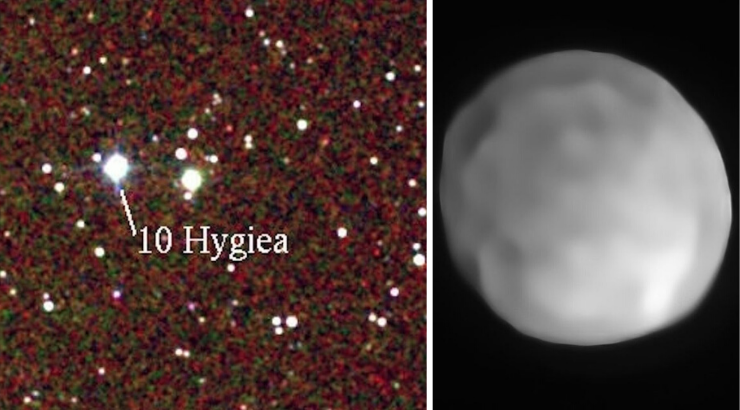The Universe
Scientists Say There May Be a New Dwarf Planet in Our Solar System
A rock once believed to be the fourth-largest asteroid in our solar system may actually be a dwarf planet.

(TMU) — A giant rock once believed to be the fourth-largest asteroid in our solar system could, in fact, be a dwarf planet due to its spherical shape.
Named Hygiea and located in the main asteroid belt lying between Mars and Jupiter, it could be the smallest such dwarf planet in our entire solar system.
Such a reclassification would mean that Hygiea, which measures at just over 280 miles in diameter, is smaller than the previously identified dwarf planet Ceres, which lies in the same rocky belt and was previously considered the smallest.
New research published Monday in Nature Astronomy, however, reveals that Hygiea has characteristics resembling a planet, particularly due to its shape, size, origin, and rotation.
Hygiea had previously been discovered by Italian astronomer Annibale de Gasparis as far back as 1849 but has seldom been studied. However, the new study led by astronomer Pierre Vernazza from the Laboratoire d’Astrophysique de Marseille in France has shed new light on the celestial object, thanks in no small part to the European Space Agency’s SPHERE instrument on the Very Large Telescope (VLT) in the Atacama Desert of Chile.
The new data has convinced astronomers to upgrade Hygiea to a dwarf planet, which the International Astronomical Union (IAU) defines as an object orbiting a star—such as the sun—that is large enough to be surrounded by its own gravity, yet lacks the gravitational dominance to keep the “neighborhood” around its orbit clear by slinging away or consuming the many smaller objects that get in its path.
It must also have been molded by its own gravity into a round, or nearly round, shape.
One example would be Pluto, which was controversially downgraded to a dwarf planet in 2006 after the IAU reworked its criteria for what constitutes a fully-fledged planet.
In addition to Ceres and Pluto, three other dwarf planets in our solar system are known—Eris, Haumea and Makemake.
In a statement quoted by CNN, Vernazza said:
“Thanks to the unique capability of the SPHERE instrument on the VLT, which is one of the most powerful imaging systems in the world, we could resolve Hygiea’s shape, which turns out to be nearly spherical.
Thanks to these images, Hygiea may be reclassified as a dwarf planet, so far the smallest in the Solar System.”
This all came as a great surprise to astronomers when they began to study Hygiea, which they believed would have shown large impact craters that would have constituted evidence of a huge collision. But instead, all they could identify were two small craters—meaning that Hygiea wasn’t simply another asteroid belonging to the other 7,000 or so asteroids in the belt.
What this means is that Hygiea has an entirely different origin story. Using their data, the researchers used a computer simulation to test the theory that Hygiea and the other asteroids were the result of a huge collision between two massive celestial bodies, which is thought to have occurred roughly two billion years ago.
Once the collision occurred, Hygiea was formed through the leftover pieces while all of the other debris became its thousands of companion asteroids, according to the team.
Vernazza commented:
“Thanks to the VLT and the new generation adaptive-optics instrument SPHERE, we are now imaging main belt asteroids with unprecedented resolution, closing the gap between Earth-based and interplanetary mission observations.”
By Elias Marat | Creative Commons | TheMindUnleashed.com
Typos, corrections and/or news tips? Email us at Contact@TheMindUnleashed.com
